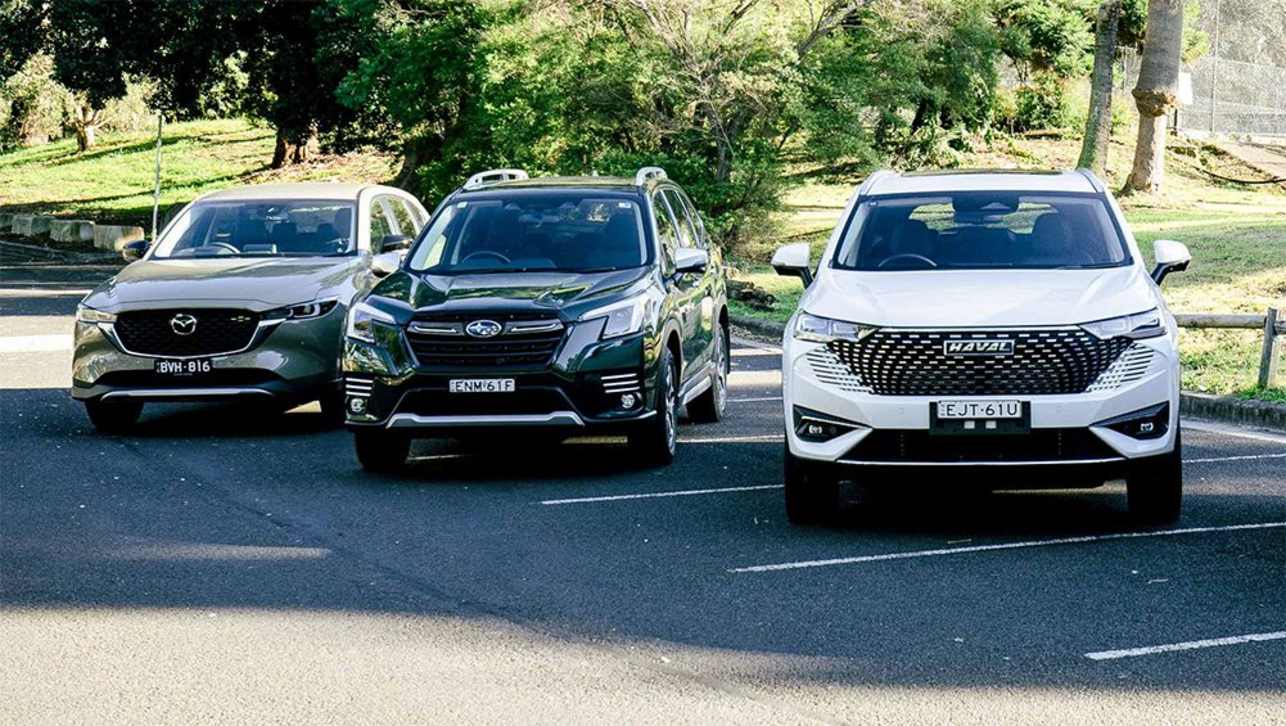We’ve become desensitised to ubiquitous ‘Made in China’ stickers on all manner of household products but there’s something about a whole car that incites extra scrutiny.
Writing stories about new brands and models weekly we see the kind of comments – positive and negative – garnered by announcements from new arrivals.
Likely, the interest is there because a car is the second-biggest – or even most significant – purchase many of us will make in our lives. You don’t want to put your faith in something that will let you down.
A replacement of the guard has happened before. Believe it or not, Toyota wasn’t always the powerhouse it is today, while Hyundai and Kia were nowhere in the early 1980s. Such is the speed of new Chinese cars from A-Z, if you’re looking to replace your current family car like a Mitsubishi ASX or Mazda CX-5 you’re almost certain to come across a rival produced in China.
MG was the first brand to hit the mainstream in Australia. It’s now a pretty sure bet the SAIC-owned once-British badge will feature as one of the top 10 sellers each month. The next most established is GWM, previously known as Great Wall Motors, followed most recently by Chery and electrified specialist BYD.
There are other cars on sale here from western manufacturers built in China. Everyone knows about Tesla but did you know that the Volvo XC40 Recharge and BMW iX3 are both made there?

Cars from China accounted for 15.3 per cent of sales so far in 2024, a little down on 15.9 per cent in 2023 but the trend is towards growth. Expect plenty of launches this year to bolster those figures, too.
And that’s far from the end. From Aion to Zeekr, hot on the heels of more Aussie media presence than ever at the 2024 Beijing Motor Show, new brands are popping up out of nowhere. It’s like whack-a-mole with each promising to be more premium, reliable and better distributed than the next.

If all the promises are to be believed, there will be at least 15 Chinese car brands, sub-brands or subsidiaries vying for Australian market share by 2026 and many have aspirations to be a top-10 seller. There are currently 49 brands on sale here in a circa one million unit market, so something will have to give for new brands to get a foothold.
Importer of new brand Xpeng, True EV reckons “there’s just going to be a clean-out” of those that can’t survive while executives at established marques including Toyota and Kia have acknowledged the threat new players pose to market share.
How is China getting ahead?
If you canvas the spec sheets of all the rival brands, Chinese opposition may be pretty close dollar-for-dollar to base models of established marques. Look closer and you’ll notice larger touchscreens and more prolific fitment of ‘luxury’ features like heated seats, massage functions, artificial leather upholstery, driver assistance and phone connectivity even at the low end.
There are some particular models that, if they aren’t treated to a heavy revision soon, risk being outplayed by new arrivals. Many are in the popular small and medium SUV space and are getting on in years.
In the small SUV category, the Mitsubishi ASX and Mazda CX-3 come to mind. Their vintages are 14 and 10 years, respectively, and in the face of the Chery Omoda 5 (up 320 per cent YTD), GWM Haval Jolion (up 35 per cent YTD) and MG ZS (up 9.2 per cent) these established names are looking expensive and behind the eight-ball for technology.

Family favourites like the Mazda CX-5 and Subaru Forester are a little safer with less heat from China so far. The new Chery Tiggo 7 Pro and established GWM Haval H6 (up 10.6 per cent YTD) aren’t doing as much damage as their smaller siblings. BYD’s affordable plug-in hybrid Sealion 6 is sure to shake things up, though.
As for utes, legacy makers could be accused of resting on laurels compared to rapid Chinese expansion. The Nissan Navara and Toyota HiLux are both due updates, with the former's sales slowing over the last 18 months.
New versions of the LDV T60 and GWM’s ute, the bigger Cannon Alpha, are the current threats. Commitments to the market from BYD, Chery, JAC, Geely and more manufacturers are sure to rattle the establishment – the Kia Tasman should help Korea break in, too.

The trade offs? They’re more subjective aspects. Quality of interior construction and material longevity; ride comfort, engine response and fuel efficiency; and one of the most obvious, the implementation of driver-assistance system. Maturity is approaching rapidly, which is obvious when you see how short the product life cycle of each model is.
This is all while ignoring battery electric vehicles, too. China undeniably has a leg-up in the mass space with affordable production of both vehicles and batteries. That product cycles seem to be as short as three or four years compared to the typical six-eight year lives of rivals helps, too.
The next frontier will be establishing a presence in the higher margin luxury sphere. For now, Audi, BMW, Lexus, Mercedes-Benz remain safe from encroaching brands. Put that down to the value of a badge, something new-on-the-scene brands find it harder to curate.

Bloody noses are obvious in countries with industries to protect: Europe is grappling to balance the success of local manufacturers at home while trying to keep a presence in China and the Biden administration has announced 100 per cent import tariffs.
A lack of new-car manufacturing industry and high wages make Australia the perfect market to make a mark. Whether China’s influx will be strong enough to knock Toyota from its perch, only time will tell. But there are so many new-car buyers, so any manufacturer that can’t keep its head above the rapidly shifting seas of change will likely suffer.







.jpg)



.jpg)





.jpg)





.jpg)
.jpg)




.jpg)
.jpg)
Comments